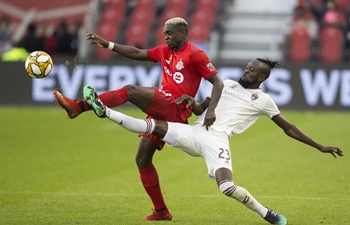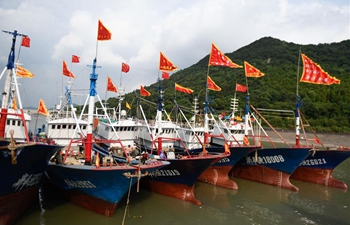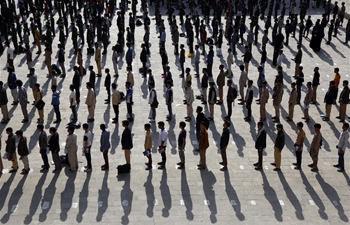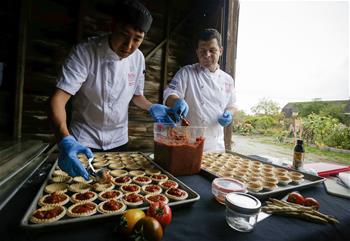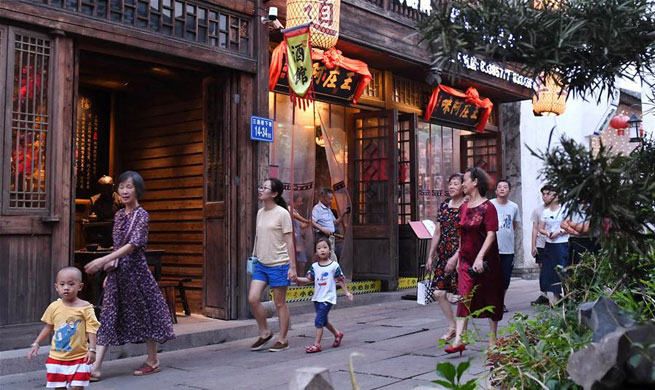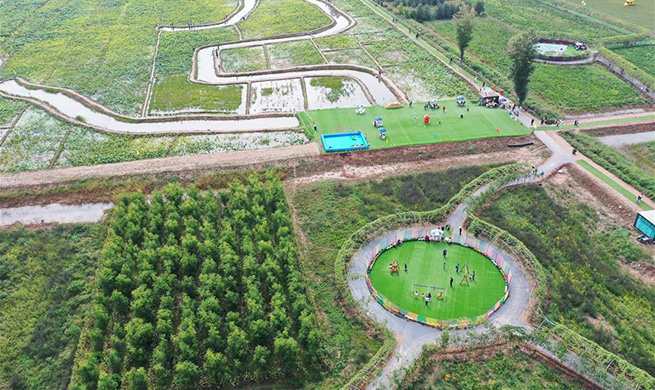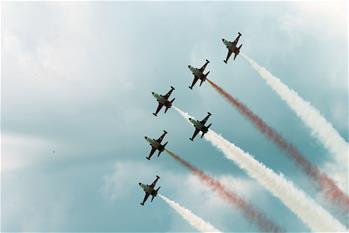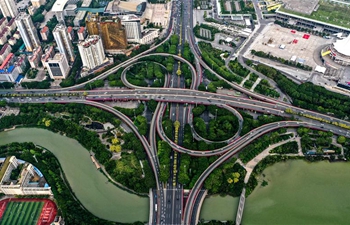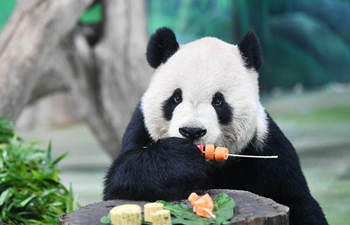HOHHOT, Sept. 16 (Xinhua) -- Ulijidelger never imagined he would become an Internet sensation overnight, just because of the way he took his son to school on the first day of the new semester -- riding a horse.
Wearing traditional Mongolian hats and robes, one shiny red and the other Tiffany blue, the father and son rode two white horses to school through high-rises in the city of Ordos, north China's Inner Mongolia Autonomous Region.
Their short video clip taken by a passerby soon became one of the most searched hashtags on Weibo, with more than 10 million views.
"Although we've settled in the city for years, I don't want my son to forget our tradition of horse riding," Ulijidelger said.
Riding a horse on the first day of school has become fashionable. As an indispensable part of nomadic culture in north China, the centuries-old Mongolian horse culture is coming back to the grasslands in new forms.
Horses gradually began to decrease in importance in the late 1990s as Mongolian urban settlers abandoned their traditional nomadic lifestyle on the grasslands.
Chulu, 43, who grew up in Taipusi Banner of Xilingol League, an imperial racecourse in ancient times, bid farewell to his life on horseback in 1992 when his father insisted on selling the family's last five horses. The mounts were replaced by a motorcycle.
The once indispensable Mongolian horses faced urgent need of conservation as their population dropped from 2.39 million in 1975 to less than 700,000 in 2007. Some herdsmen even sent their saddles to museums.
For China's nomads, moving away from horses is a result of the changing pastoral animal husbandry with a more mechanized, industrialized and market-oriented development, said Manglai, vice president of Inner Mongolia Agricultural University (IMAU).
"Horses have lost their value since herdsmen rarely make money from stock raising," he added.
Yet thriving tourism spurs the horse industry which bulges the herdmen's wallets.
Nasunbator, a herdsman from Abaga Banner of Xilingol League, could collect 100 kg of fresh mare's milk every day during the peak season and sell it to a local plant to make fermented milk.
"Herdsmen didn't milk maria in the past because no one would buy it, but now, you can make money by either raising horses, selling them, milking or herding," he said. His 200 black horses attract camera flashes of many tourists, even professional photographers.
Horse training and racing are once again becoming the most popular sports for Mongolians, with more than 600 Nadam Fair-like derbies held across the region every year.
Sangduuren, who makes a good living by rasing cattle with his father in Zhalute Banner in the city of Tongliao, plasters his room with his horse-racing certificates.
The 37-year-old herdsman and turfite races as much as he can, and won a gold medal early this year in Qinghai Province, thousands of kilometers to the west.
Over the years, Ferghanas, Arabian and warmblood horses have been introduced to Inner Mongolia.
"Those introduced warmbloods will improve the breeds of Mongolian horses," Sangduuren said.
In Hohhot, the regional capital, the venue of the Qiangu Masong (eternal ode of horses), a grand live performance featuring horse culture using glasses-free 3D and other technologies, has been packed for every show.
It has been performed more than 300 times since 2014 and has been seen by some 300,000 spectators from over 20 countries and regions.
Life on horseback today has changed significantly compared with the past, with the Mongolian ethnic people sitting tall in the saddle.
"Reclaiming the lifestyle on horseback reflects China's path of development by protecting national traditions and the spiritual homeland," said Gai Zhiyi, professor at the IMAU.




